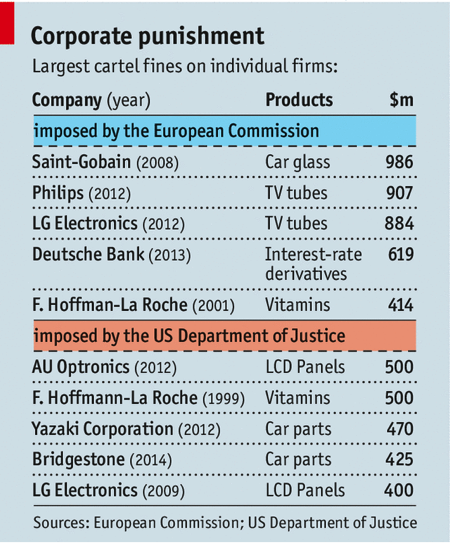Continuing our in-depth treatment of The Economist’s (unwitting?) coverage of agricultural biodiversity, two items in the most recent issue. First, consider this photo:

It’s from an article on the BBC World Service, and clearly shows the value of a radio in Africa. But what’s that the listener is holding? Could it be a cavy? I rather think it could, and of course one wouldn’t expect The Economist to mention its origins in the Andes. We, however, still want to know when they arrived, how they got there, and whether they are proving the “indispensable” option they were thought to be.
Then there’s this little table, from an article on price fixing and cartels.

See those innocuous little entries for F. Hoffman-La Roche, labelled Vitamins? Those reflect decisions more than a decade ago by the US and the EU to fine not just Hoffman but a bunch of other pharmaceutical companies for fixing the price of vitamin A supplements, proof enough of the economic value of treating vitamin A deficiency as a simple medical problem requiring a simple (and expensive) medical fix. And most of the time, synthetic supplements aren’t even that useful to the children who get them. How else might you improve vitamin A levels? Well, you could try promoting a more diverse diet. But where’s the profit in that?
p.s. I was slightly saddened to see that while Hoffman remains joint number 1 in the EU, it has slipped to a poor 5th in the US. So I ran the numbers through an inflation indexer, which brings the $500 million up to $705 million in today’s dollars, which at least bumps them up a place.